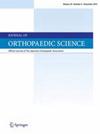Infection of surgery for bone and soft tissue sarcoma with biological reconstruction: Data from the Japanese nationwide bone tumor registry
IF 1.5
4区 医学
Q3 ORTHOPEDICS
引用次数: 0
Abstract
Background
Although biological reconstruction (such as recycled autograft, vascularized autograft, allograft, or bone transport) is possible for bone defects after malignant bone or soft tissue tumor resection, a high incidence of postoperative complications, including infection, poses a problem. The difficulty in accumulating cases has resulted in a lack of reliable etiological information, such as the incidence and risk factors of postoperative infections.
Methods
We conducted a retrospective study on the nationwide registry data. The primary endpoint was the need for additional surgical intervention for infection control. The overall incidence of postoperative infection and the related risk factors were analyzed.
Results
We included 707 malignant bone and soft tissue tumors with biological reconstruction, including recycled autograft, vascularized autograft, allograft, bone transport, and combinations of these. The incidence of postoperative infection was 10.8%. Patients reconstructed by pedicled autograft showed a higher incidence of infection, while cases involving the combination of recycled and pedicled autograft or allograft showed a lower incidence. Independent risk factors for infection included age over 17, tumor diameter over 10 cm, the tumor located on the trunk or being high grade, reconstruction by pedicled autograft, and delayed wound healing.
Conclusion
Infection incidence was comparable to those in previous reports. Several conventional and novel risk factors were extracted by administering nationwide registry data. Data from the nationwide registry was informative for analyzing the incidence of postoperative infection in biological reconstruction with malignant bone and soft tissue tumor resection.
骨与软组织肉瘤手术感染与生物重建:来自日本全国骨肿瘤登记处的数据。
背景:虽然生物重建(如再造自体移植、血管化自体移植、同种异体移植或骨转运)可用于恶性骨肿瘤或软组织肿瘤切除术后的骨缺损,但术后感染等并发症的高发生率仍是一个问题。由于难以积累病例,因此缺乏可靠的病因学信息,如术后感染的发生率和风险因素:我们对全国范围内的登记数据进行了一项回顾性研究。方法:我们对全国范围内的登记数据进行了回顾性研究,主要终点是为控制感染而需要额外的手术干预。结果:我们纳入了 707 例恶性骨肿瘤患者:我们共纳入了707例恶性骨与软组织肿瘤的生物重建,包括再造自体移植、血管化自体移植、异体移植、骨转运以及这些方法的组合。术后感染发生率为10.8%。采用有蒂自体移植物重建的患者感染率较高,而结合使用再造和有蒂自体移植物或异体移植物的病例感染率较低。感染的独立风险因素包括:年龄超过17岁、肿瘤直径超过10厘米、肿瘤位于躯干或等级较高、采用有蒂自体移植物重建、伤口延迟愈合:结论:感染发生率与之前的报告相当。通过管理全国范围的登记数据,提取了一些传统和新的风险因素。全国性登记数据对分析恶性骨与软组织肿瘤切除生物重建术后感染的发生率具有参考价值。
本文章由计算机程序翻译,如有差异,请以英文原文为准。
求助全文
约1分钟内获得全文
求助全文
来源期刊

Journal of Orthopaedic Science
医学-整形外科
CiteScore
3.00
自引率
0.00%
发文量
290
审稿时长
90 days
期刊介绍:
The Journal of Orthopaedic Science is the official peer-reviewed journal of the Japanese Orthopaedic Association. The journal publishes the latest researches and topical debates in all fields of clinical and experimental orthopaedics, including musculoskeletal medicine, sports medicine, locomotive syndrome, trauma, paediatrics, oncology and biomaterials, as well as basic researches.
 求助内容:
求助内容: 应助结果提醒方式:
应助结果提醒方式:


